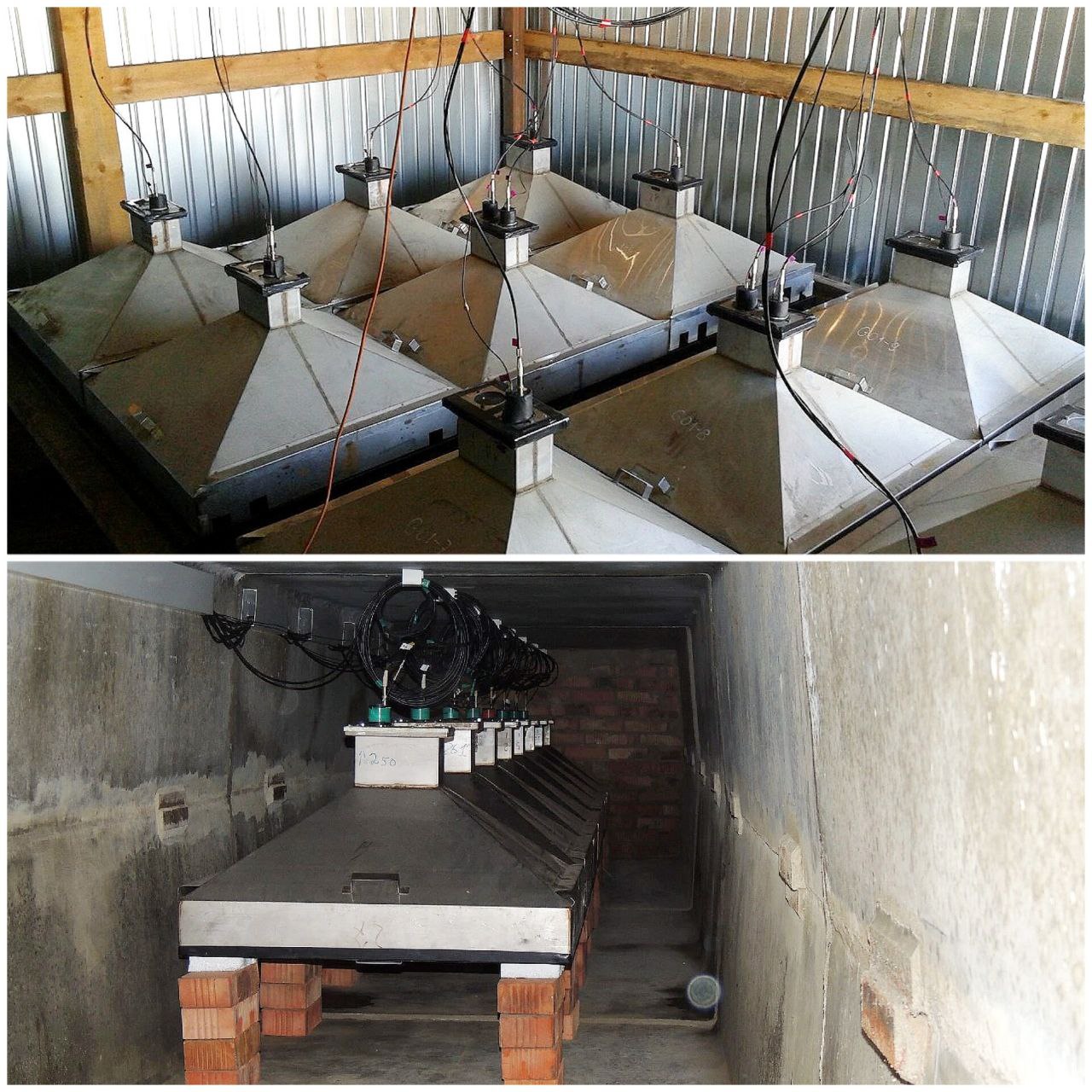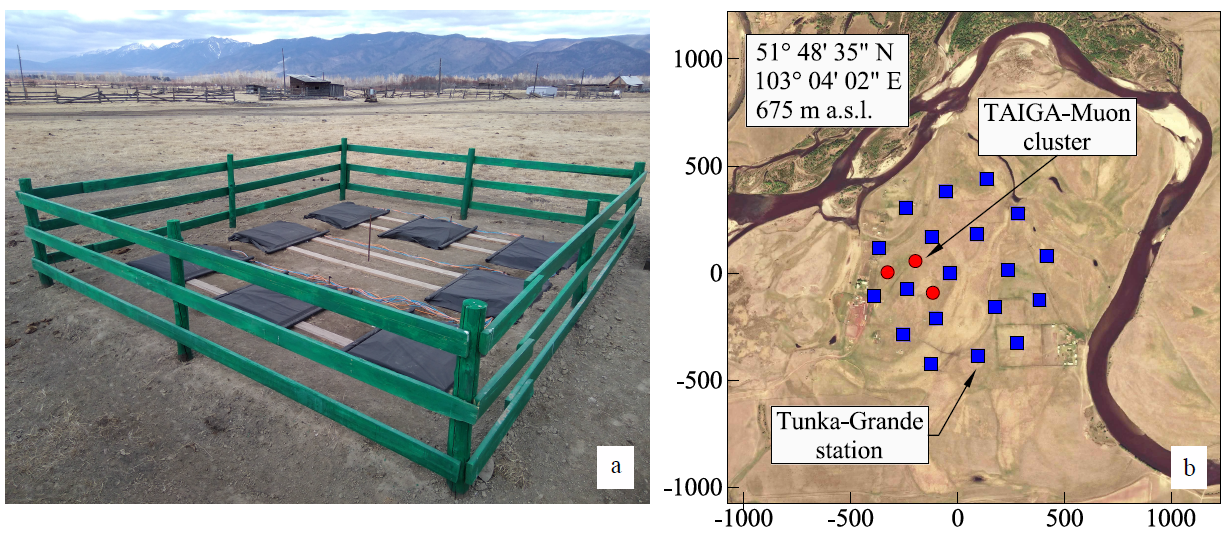The Tunka-Grande scintillation array was put into service at the end of 2015. Its task is to study the energy spectrum and mass composition of cosmic rays in the energy range of 1016–1018 eV in combination with the Tunka-133 facility, as well as to search for diffuse gamma radiation in the same energy range. The array of scintillation counters is organized into 19 stations covering an area of 1 km2. Each of them consists of two parts: surface and underground.

The TAIGA-Muon detectors complement the existing scintillation array with an estimated total detector area of about 2000 m2. Each cluster of the TAIGA-Muon facility (currently there are 3 of them) includes 8 ground and 8 underground scintillation counters. Ground-based devices are used to detect all charged EAS particles at the level of the facility, and underground devices are used to detect the muon component. It is worth noting that the operation of the new array in a wide range of zenith angles of arrival of primary particles will not only determine the flux of diffuse gamma rays but also identify local areas with an excess of them. Subsequently, upon detection, such areas will be studied in detail using the TAIGA-HiSCORE and TAIGA-IACT arrays.

